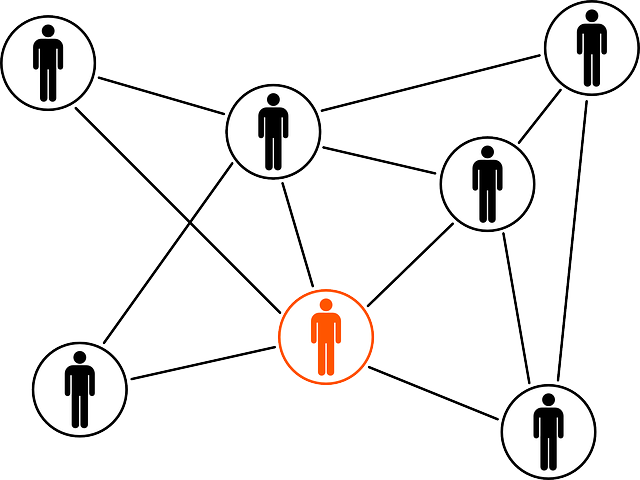Want to elect out of the centralized partnership audit regime? This guide explains the eligibility rules, steps to make a valid election, and what your partnership needs to know. Our article may be used to guide discussions between partnership management and their CPA or tax professional.
Key Takeaways
- Partnerships must meet specific eligibility criteria, including having 100 or fewer eligible partners, to opt out of the centralized partnership audit regime (CPAR).
- To make a valid election to opt out of CPAR, partnerships must file a timely partnership return that clearly states the election and notifies all partners within a month of filing.
- Opting out of CPAR shifts tax assessments to individual partners, necessitating careful planning and compliance to manage the administrative burdens and potential audits.
What is the Centralized Partnership Audit Regime
The Centralized Partnership Audit Regime (CPAR) was created as part of the Bipartisan Budget Act of 2015 (BBA) to modernize and simplify the IRS’s approach to auditing partnerships. Partnerships subject to these new rules are are called BBA partnerships. Prior to CPAR, partnership audits were governed by the Tax Equity and Fiscal Responsibility Act (TEFRA) of 1982, which required the IRS to audit partners individually, often resulting in long and complicated processes. CPAR allows the IRS to audit the partnership as a whole, rather than each partner separately.
This centralized approach allows the IRS to assess and collect taxes and tax adjustments at the partnership level, simplifying enforcement but also shifting the tax liability and administrative burden. CPAR procedures govern how these partnership audits are conducted, including the assessment and collection of taxes. Under CPAR, the partnership itself is generally responsible for paying any imputed underpayment resulting from audit adjustments. This result in unexpected tax liabilities for current partners, even if the adjustments relate to prior years or former partners.
To balance these changes, CPAR includes provisions allowing eligible partnerships to opt out of the regime annually. The new rules apply to taxable years beginning after January 1, 2018. Opting out means the partnership chooses to be audited under the old rules, where tax adjustments are assessed at the partner level. This may be more beneficial for certain partnerships and their partners. But this election requires strict eligibility criteria and procedural compliance.
Eligibility Requirements
To opt out of the centralized partnership audit regime, your partnership must meet specific eligibility requirements. A partnership makes a valid election only if all requirements are met. A partnership electing out must ensure it meets every requirement to comply with IRS regulations:
- Your partnership must qualify as an eligible partnership for the tax year in question.
- Your partnership must have 100 or fewer partners.
- All partners within the partnership must be eligible partners.
Eligible Partners
An eligible partner includes:
- Individuals
- C corporations
- S corporations
- Estates of deceased partners
- Certain foreign entities
- Deceased partners
For any partner, including foreign partners, a valid taxpayer identification number (TIN) must be provided to the IRS.
To substantiate the eligibility for electing out, partnerships must provide documentation to the IRS of the tax status of all partners and shareholders of partners that are S corporation. The number of eligible partners is calculated by adding the number of Schedules K-1 and including all shareholders for S corporations.
Make sure your partnership only has eligible partners to make a valid election to opt out of CPAR.
Ineligible Partners
Certain types of partners disqualify a partnership from electing out of the centralized partnership audit regime. These ineligible partners include:
- Partnerships
- Trusts (including a grantor trust, which is a type of disregarded entity)
- Foreign entities without valid U.S. TIN or ITIN
- Disregarded entities, such as single-member LLCs and grantor trusts
- Entities or persons holding partnership interests on behalf of another person
Knowing who is an ineligible partner is important because having even one ineligible partner in the partnership disqualifies the entire partnership from electing out of CPAR. Identify and address any ineligible partners to ensure the partnership meets the requirements for a valid election.
Important Tax Tip: Partnerships should review their eligibility to opt out of the Centralized Partnership Audit Regime with their CPA firm.
Making the Election
Making a valid election to opt out of the centralized partnership audit regime involves several key steps. The election must be made on a timely filed partnership return and include the necessary partner information, such as their Tax Identification Numbers (TINs) and details about each partner’s partnership interest. Also, all partnership related items must be accurately reported when making the election.
Timely Filed Partnership Return
To ensure your election to opt out of CPAR is valid, it must meet the following requirements:
- Be filed with your timely filed partnership return.
- Clearly state the election on the return.
- Be submitted within the IRS deadlines for the applicable taxable year.
- Include the federal tax classification of each partner, ensuring all necessary information is provided to the IRS.
Notification to Partners
Once the election is made the partnership representative must notify all partners on behalf of the partnership within a month of its submission. This ensures all partners are aware of the election and understand its implications.
Communicate clearly and promptly with partners to maintain transparency and ensure everyone understands the partnership’s tax strategy. Failure to notify partners on time can cause complications and disputes.
Partnership Representative
The partnership representative under CPAR has exclusive authority to deal with the IRS. The role of the partnership representative under CPAR is centralized and authoritative. This means the partnership representative is the sole point of contact between the partnership and the IRS during any audit. The partnership representative’s decisions and actions bind the partnership and all its partners, so make sure you appoint a knowledgeable and trustworthy individual or entity to this role.
The partnership representative is responsible for all communications with the IRS, including responding to audit inquiries, negotiating settlements and making elections related to the audit process. Unlike prior regimes individual partners do not have the authority to directly engage with the IRS regarding partnership-level audits; all such matters must be handled through the partnership representative.
Also, the partnership representative must be designated on the partnership’s timely filed return for each taxable year. If no representative is designated the IRS can select one, which may not be what the partnership wants. So think carefully about this appointment to ensure effective representation.
What it Means to Opt Out
Opting out of the centralized partnership audit regime has major consequences for partnerships. When a partnership elects out, the IRS auditors will assess tax at the individual partner level, rather than at the partnership level. Tax assessments are determined separately for each partner, reflecting their specific share of income, deductions, gains, losses, and credits.
Individual Partner Examinations
When a partnership elects out of CPAR each partner will face separate assessments rather than a single partnership-level audit. This means partnerships must manage separate examinations for each partner regarding their share of partnership items.
Long-Term Strategies
Partnerships that opt out of the audit regime should review changes in partnership interests, such as new partners joining or existing partners transferring their interests, which can impact eligibility to opt out of the centralized partnership audit regime. Make sure all partners remain eligible partners throughout the tax year as the presence of an ineligible partner at any time can invalidate the election.
Also, partnerships that opt out of the audit regime must keep thorough and accurate records of each partner’s tax status, taxpayer identification number and partnership interest. These records support compliance with IRS requirements and facilitate timely and accurate reporting in case of individual partner audits following an election to opt out.
Costs vs. Benefits
Electing out of the centralized partnership audit regime involves weighing several costs and benefits that can significantly impact your partnership’s tax situation and administrative responsibilities.
Benefits
One of the main benefits is that tax liabilities are assessed at the individual partner level not at the partnership level. This means partners are taxed according to their own circumstances which can result in lower overall tax paid if partners have different tax rates or attributes. Also, opting out can prevent the partnership from facing an imputed underpayment tax, which under CPAR is calculated at the highest tax rate and paid by the partnership itself.
Opting out also allows partnerships to avoid some of the complexities and risks associated with the new centralized partnership audit procedures. For example under CPAR the partnership representative has sole authority to act on behalf of the partnership, binding all partners to audit outcomes and decisions. Opting out preserves the traditional audit framework where partners are individually responsible for their tax liabilities and have more control over their audits.
Costs
On the other hand, electing out can increase administrative burdens and costs. Because tax adjustments are made at the partner level, each partner may be subject to a separate IRS audit, which can lead to multiple examinations and increased compliance costs. This can be especially challenging for partnerships with many partners, even if they meet the 100-partner threshold.
Also, partnerships must keep detailed records of each partner’s tax status, taxpayer identification number and partnership interest to support the election and any subsequent audits. Failure to keep accurate records can lead to invalid elections or disputes with the IRS.
Finally, partnerships should consider ownership changes. If new partners join or existing partners leave during the tax year, it may affect eligibility to opt out, potentially causing the partnership to default to the CPAR procedures unintentionally.
Strategic Considerations
Given these points, partnerships should consider whether electing out fits their long term tax strategy and operational capabilities. Consulting with tax professionals can help assess the partnership’s specific situation, including the nature of partners, the partnership agreement and anticipated changes in ownership.
By weighing the tax savings against increased administrative burdens, partnerships can make informed decisions that optimize their tax position and minimize IRS audit and compliance risks.
Summary
Opting out of the centralized partnership audit regime has pros and cons. By understanding the eligibility, making a valid election and considering the implications, partnerships can optimize their tax strategies and compliance.
Strategic planning, including cost/benefit analysis, long term planning and consulting with tax advisors is key for partnerships to make informed decisions and optimize their tax outcomes. By following these steps partnerships can navigate the audit regime and achieve their tax goals.
Frequently Asked Questions
What is the main benefit of electing out of the Centralized Partnership Audit Regime (CPAR)?
Opting out of the Centralized Partnership Audit Regime (CPAR) allows individual partners to potentially reduce their overall tax liabilities as it can lead to less burdensome partnership-level assessments based on their own tax situations. This may be more beneficial for partners with different tax circumstances.
Who qualifies as an eligible partner for electing out of CPAR?
Individuals, C corporations, S corporations, estates of deceased partners and certain foreign entities with valid U.S. taxpayer identification numbers (TINs) are eligible partners for opting out of CPAR.
What happens if a partnership’s election to opt out is invalid?
If a partnership’s election to opt out is questioned the IRS will determine if the election is valid. If the IRS finds the election invalid the partnership will receive a written notification and will need to amend its returns.
What are the compliance requirements for partnerships opting out of CPAR?
Key compliance requirements for partnerships opting out of CPAR include keeping detailed records, regular assessments of partner dynamics and ongoing tax compliance monitoring across all relevant tax years. These are essential to minimize audit and tax risks.
____________________________
For more information about the tax and accounting services we provide, visit our Home Page! The friendly CPAs, Enrolled Agents, tax professionals, and bookkeepers and accountants at Massey and Company CPA are here to assist you.
If you want my team and I to handle your tax matter for you, click here.
You are welcome to email me directly at gary.massey@masseyandcompanyCPA.com.
Massey and Company CPA is a boutique tax and accounting firm serving individuals and small businesses in Atlanta, Chicago and throughout the country. Our services include tax return preparation, tax planning for businesses and individuals, estates and trusts, IRS tax problem resolution, IRS audits, sales taxes, small business accounting, and bookkeeping clean up services.
Check out our 5-Star Google reviews here!





